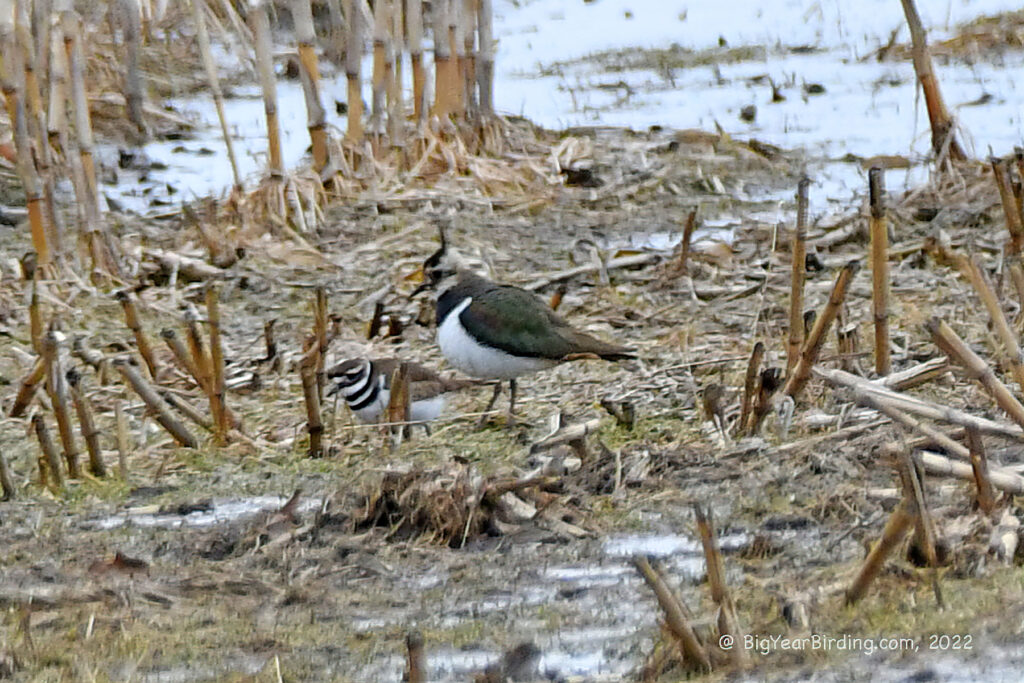
The Northern Lapwing (Vanellus vanellus) is a medium-sized wader bird that belongs to the family Charadriidae. This bird measures around 12 to 14 inches (30-35 cm) in length, with a wingspan of 28 to 32 inches (70-80 cm). The Northern Lapwing weighs around 6 to 10 ounces (170-280 grams) on average, with males being slightly heavier than females.

This bird has several distinguishing field marks that make it easy to identify. Its head and neck are iridescent green, and it has a black crest on its head that stands upright during breeding season. Its breast is white, and it has a black bib on its throat that extends down to the upper chest. The back and wings are brown, and the underparts are white. Its tail feathers are black and white, creating a distinctive pattern when the bird is in flight.
The Northern Lapwing is a migratory bird that breeds across Europe and Asia and winters in Africa. It breeds in open farmland, meadows, and wetlands with short vegetation. During the breeding season, the male performs a spectacular aerial display, flying high into the sky and tumbling down while calling loudly. After breeding, the birds migrate to their wintering grounds in Africa, south of the Sahara, where they can be found in wetlands, floodplains, and grasslands.
Despite its name, the Northern Lapwing is not closely related to the true lapwings. It is known for its distinctive call, a loud, sharp “pee-wit” or “pee-wee.” The bird is also known for its bold behavior, defending its nest aggressively against predators and other birds. The Northern Lapwing feeds on insects, worms, and other invertebrates, which it picks from the ground using its long, curved bill.

The Northern Lapwing is a common sight in many parts of Europe and Asia, but its populations have declined in recent years due to habitat loss and hunting. Conservation efforts are underway to protect its breeding and wintering grounds, and to encourage sustainable farming practices that benefit the bird’s habitat.

